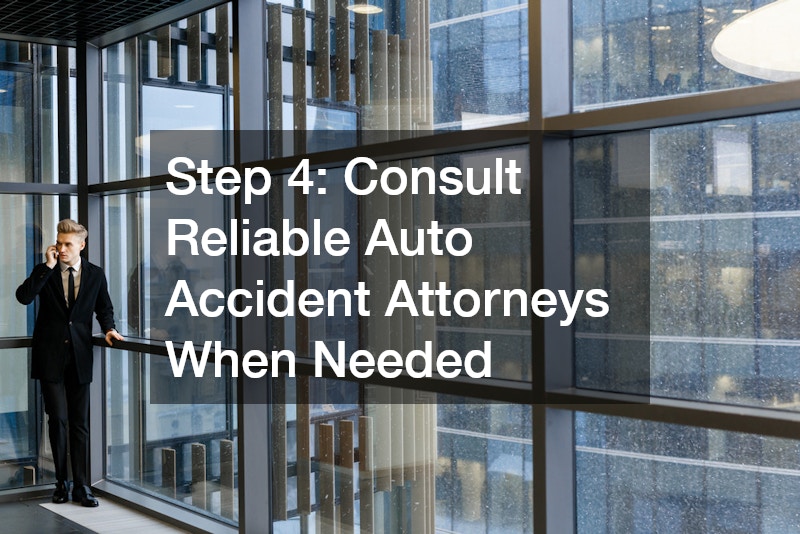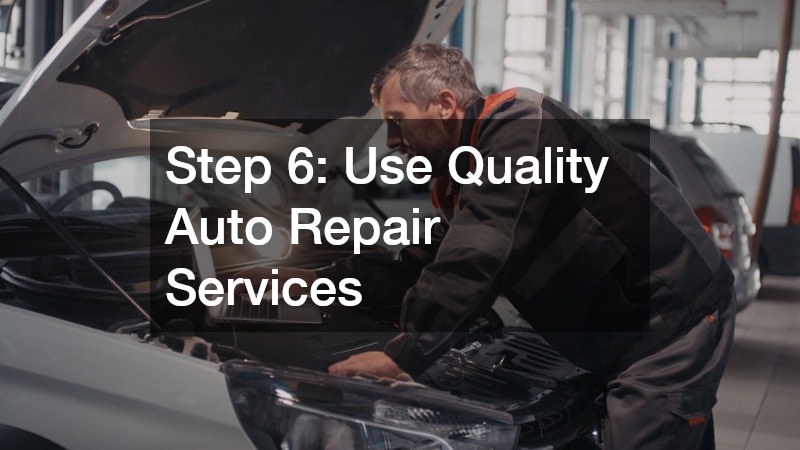Experiencing a car accident can be overwhelming. Beyond the immediate shock and stress, drivers often face the challenge of restoring their vehicle to safe, reliable condition. Many people underestimate the steps involved in proper recovery, focusing only on visible damage and neglecting underlying mechanical or structural issues.
A thorough, organized approach ensures that every aspect of your car is addressed. From documenting the incident to coordinating repairs and understanding insurance claims, the right sequence of steps prevents future problems and helps you regain confidence behind the wheel. Whether you are dealing with minor fender-benders or more serious collisions, following a clear plan allows you to protect your vehicle, minimize stress, and reduce the risk of long-term costs.
This guide outlines ten essential steps to ensure your vehicle is fully restored after a crash. It covers practical advice for repairs, professional support, and preventive measures to maintain your car’s performance and appearance. Taking the right actions early can make the difference between a smooth recovery and ongoing complications.
Step 1: Assess the Impact

After a crash, check for injuries, both your own and those of others involved, and call emergency services if necessary. Moving vehicles out of traffic, when possible, prevents further accidents and protects everyone on the road.
Even in minor accidents, it’s crucial to assess the immediate scene. Look for hazards such as leaking fluids or exposed debris. Taking photos of the vehicles, the surrounding area, and any visible damage helps document the accident for both insurance purposes and future repair planning.
Contacting a professional towing service is often necessary if your car cannot be safely driven. Towing prevents additional mechanical or structural damage and ensures that your vehicle reaches a repair facility promptly. Using a licensed service also reduces liability concerns and keeps the recovery process organized.
Immediate attention to safety and assessment reduces the risk of additional damage or injuries. It sets the stage for coordinating professional support and ensures that your vehicle and well-being are both protected during the initial aftermath of a collision.
Step 2: Seek Medical Attention for Injuries
Even if you feel fine after an accident, auto accident injuries can manifest hours or even days later. Whiplash, concussions, and soft tissue injuries are common and may not be immediately apparent. Seeking a medical evaluation protects your health and ensures that any emerging symptoms are properly addressed.
Medical documentation of injuries is also critical if insurance claims or legal matters arise. Comprehensive records help establish the severity of the accident and support claims for compensation or coverage. Prompt attention to injuries reduces the likelihood of long-term complications and contributes to a smoother recovery process.
In addition to your personal health, addressing injuries early can improve your ability to manage subsequent steps in vehicle recovery. Being physically well allows you to coordinate repairs, communicate with professionals, and handle insurance requirements efficiently, without unnecessary stress or delays. Prioritizing health is an essential part of fully restoring both yourself and your vehicle after a crash.
Step 3: Contact Your Insurance Provider Promptly
Notifying your auto insurance company immediately is a critical step. Early reporting ensures your claim is processed efficiently and that coverage requirements are met. Insurance representatives provide guidance on documentation, repair approvals, and next steps for your vehicle.
Providing detailed photos and notes from the accident helps your insurance adjuster accurately assess damage. Clear, timely communication reduces delays and ensures that both minor and major repairs are addressed. Your provider can also recommend trusted auto body shop partners to streamline repair coordination.
Working closely with your insurance company also safeguards your financial interests. Prompt reporting prevents disputes over coverage and ensures that your vehicle receives necessary repairs in a timely manner. Understanding your policy, including deductibles, coverage limits, and approved service providers, allows you to plan the restoration process effectively.
Step 4: Consult Reliable Auto Accident Attorneys When Needed

In accidents involving significant injury, liability disputes, or complex insurance claims, engaging reliable auto accident attorneys is advisable. Experienced attorneys help navigate legal complexities, protect your rights, and ensure fair compensation.
Legal professionals can review documentation, negotiate with insurers, and provide guidance on claims related to both vehicle damage and personal injury. They can also advise on steps to safeguard evidence, communicate with other parties, and prevent missteps that could impact your claim.
Consulting a trusted attorney early in the process can save time and stress. It ensures that you have expert support in handling disputes, coordinating medical records, and understanding the full scope of compensation available, ultimately supporting both your personal recovery and vehicle restoration.
Step 5: Schedule Comprehensive Vehicle Inspections
Before proceeding with repairs, a thorough inspection by a qualified auto body shop or mechanic is essential. Collisions often cause hidden structural or mechanical damage that may not be visible at first glance. Identifying these issues early prevents further problems and ensures repairs are done correctly.
Inspections typically cover frame alignment, suspension components, engine performance, and safety systems. Identifying problems such as misaligned brakes, compromised steering, or hidden fluid leaks ensures that your vehicle is fully restored to a safe, reliable condition. Documenting all issues also helps coordinate with insurance for accurate coverage and repair approvals.
A detailed assessment allows repair teams to create a comprehensive plan for restoration. Whether addressing cosmetic concerns or critical mechanical issues, thorough inspections provide confidence that every aspect of your vehicle will be properly managed.
Step 6: Use Quality Auto Repair Services

Choosing a reputable auto repair provider is crucial for both safety and long-term vehicle performance. Skilled technicians ensure that mechanical, structural, and cosmetic repairs are executed to high standards, reducing the likelihood of recurring issues.
High-quality repair services often include access to specialized tools, experienced staff, and warranties for completed work. This level of care ensures that your vehicle is restored efficiently, whether the repairs involve engine components, suspension, or cosmetic bodywork.
Opting for professional repairs also supports insurance claims. Insurers are more likely to approve work performed by certified repair providers, streamlining the process and minimizing delays. Selecting a trusted repair shop provides peace of mind that your vehicle will function reliably and safely after restoration.
Step 7: Consider Aftermarket Auto Parts for Replacement
When replacing damaged components, high-quality aftermarket auto parts can be a cost-effective alternative to original manufacturer parts. Aftermarket parts often meet or exceed OEM specifications and are widely available, reducing wait times and expense.
Using these parts strategically allows drivers to restore performance without compromising safety or reliability. Components such as brake systems, suspension parts, or body panels can be replaced efficiently, often with a warranty for quality assurance.
Repair shops experienced with aftermarket components can integrate them seamlessly, ensuring that the vehicle maintains both structural integrity and performance. When combined with professional repairs, these parts help restore the car to pre-accident condition while managing costs.
Step 8: Protect Your Vehicle with Auto Paint and Tinting Services

Restoring the exterior of your car is as important as mechanical repairs. Auto paint protection treatments help preserve the vehicle’s finish and prevent corrosion or damage from environmental exposure. Proper application ensures durability and maintains resale value.
In addition, auto tinting services can repair or replace damaged window tint, improving both comfort and UV protection. Professional tinting not only enhances aesthetics but also contributes to vehicle safety by reducing glare and keeping interiors cooler.
Combining paint protection and tinting with comprehensive repairs ensures that your car looks as good as it performs. These finishing touches protect your investment and help maintain the overall value of your vehicle over time.
Step 9: Address Critical Safety Systems Like Brakes
Collisions can impact essential safety components. Scheduling brake repairs is a priority to ensure your vehicle operates safely after a crash. Technicians inspect pads, rotors, and hydraulic systems to confirm proper function.
Addressing brakes promptly prevents further wear or potential failure, reducing the risk of future accidents. A complete evaluation of all safety systems, including steering, suspension, and lights, guarantees that your vehicle is fully roadworthy.
Prioritizing repairs to critical systems not only protects you and other drivers but also aligns with insurance requirements. Maintaining safety standards ensures that your vehicle is compliant with regulations and fully restored for everyday use.
Step 10: Monitor Recovery and Follow-Up Maintenance
Even after all visible repairs are completed, ongoing maintenance is critical to ensure your vehicle continues to perform safely and reliably. Collisions can create hidden stress on components that may not become immediately apparent, such as suspension elements, engine mounts, or wheel alignment. By monitoring your car’s performance regularly, checking for unusual noises, vibrations, or handling changes, and adhering to scheduled service appointments, you can catch potential issues early before they develop into costly or dangerous problems.
Following professional guidance from your auto body shop or mechanic ensures that both mechanical and cosmetic repairs are maintained correctly. This might include regular inspections of structural integrity, fluid levels, brake systems, and body finishes, as well as confirming that aftermarket components are functioning properly. Consistent attention helps preserve the safety, reliability, and value of your vehicle, giving you confidence that repairs are holding up over time.
Proactive maintenance also complements the work of a skilled repair team. Combining thorough initial repairs, preventive measures such as auto paint protection or auto tinting services, and careful monitoring over time ensures that your car remains in optimal condition. Staying engaged with routine care not only protects your financial investment but also prevents surprises on the road, reduces stress, and extends the longevity of critical systems like brakes, suspension, and electronics.
Restoring a vehicle after a crash is more than just fixing visible damage—it requires careful planning, professional expertise, and attention to both cosmetic and mechanical details. From securing your immediate safety and documenting the incident to coordinating with auto insurance, trusted, reliable auto accident attorneys, and qualified repair providers, each step is vital for a smooth, efficient recovery.
Engaging a reputable auto body shop is one of the most important decisions after a collision. Skilled technicians not only repair visible damage but also identify hidden structural or mechanical issues that could compromise safety if left unaddressed. Comprehensive auto repair includes evaluating the engine, suspension, brakes, and alignment, ensuring that your vehicle operates safely and efficiently once back on the road. By addressing both cosmetic and mechanical needs, drivers can regain confidence in their car’s reliability.
Aftermarket auto parts can be a cost-effective way to replace damaged components without sacrificing quality. Modern aftermarket parts often meet or exceed manufacturer specifications and can be integrated seamlessly with existing systems. From brake pads to suspension components or body panels, these parts allow for a thorough restoration while managing expenses, especially when combined with professional repair services.
Critical safety systems, including brake repairs, must always be prioritized. Brakes, steering, and other essential systems may sustain subtle damage in a collision, and addressing these immediately prevents potential hazards and ensures compliance with safety standards. Taking a methodical approach to restoring all critical systems reduces the risk of future accidents and helps preserve insurance coverage and warranties.
Finishing touches such as auto paint protection and auto tinting services not only improve your vehicle’s appearance but also enhance long-term durability. Paint protection shields your car from corrosion, scratches, and environmental damage, while professional tinting helps regulate interior temperatures and reduces UV exposure. These measures maintain the aesthetic and functional quality of your vehicle for years to come.
Equally important is addressing personal well-being. Prompt attention to auto accident injuries ensures that physical health is not overlooked amid the repair process. Pain or untreated injuries can impede your ability to manage repairs, attend appointments, or communicate effectively with insurance providers and repair shops. Combining thorough vehicle restoration with proactive care for personal health supports a smoother, less stressful recovery overall.
By following these ten steps methodically, drivers can fully restore their vehicles, protect both their financial and personal interests, and regain confidence behind the wheel. Taking a structured, proactive approach transforms what could be an overwhelming and stressful experience into a manageable process, keeping safety, performance, and reliability as the top priorities every step of the way.

